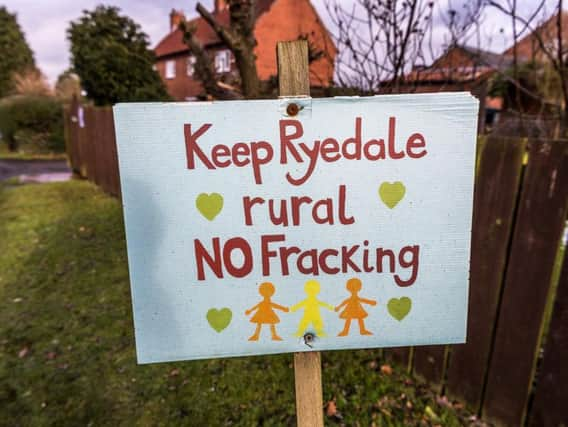Fracking in North Yorkshire: big companies say there's 'no justification' for 500-metre buffer zones between gas-well sites and homes


Amid tight security in a packed council chamber at County Hall, lawyers lined up alongside shale gas companies, including Ineos, Cuadrilla and Third Energy, green energy campaigners, residents and planning authorities to debate the county’s proposed mineral extraction policies.
Since North Yorkshire’s minerals and waste plan was examined in public last April, the Government has issued a ministerial statement on shale gas and the hearing was reopened for two days to examine whether the Whitehall guidance would impact on the plan developed jointly by North Yorkshire and City of York councils and the North York Moors National Park Authority.
Advertisement
Hide AdAdvertisement
Hide AdIn the Scarborough-Ryedale-Whitby area, Third Energy is awaiting the go-ahead from the Government to frack at its Kirby Misperton site, near Pickering. And Ineos has plans to position wells outside the North York Moors National Park but to drill underneath it.
The key issue facing the hearing followed the Government stating that planners should not set thresholds or have areas within their minerals extraction plans that unjustifiably restrict shale gas development. The county’s proposed plan had set out a 500 metre buffer zone between shale gas developments and homes and other sensitive buildings, such as hospitals and schools.
The hearing, the conclusions of which could shape planning policy on fracking across the UK, saw industry representatives show an interactive map of what the impact of the 500m buffer zone would be. They said the effect of the buffer policy would be to “sterilise” 80 per cent of their gas exploration licence area.
They said there was no justification for the buffer zones and the 500m limit that had been set was arbitrary.
Advertisement
Hide AdAdvertisement
Hide AdCampaigners and the planning authorities told examiner Elizabeth Ord that the claims the proposed minerals policy would create “no-go areas” were nonsense.
After speaking at the hearing, Mayor of Malton Councillor Paul Andrews said the 500m buffer zones were essential to “balance the interests of residents against those of the industry, because the industry want to build multi-acre fracking sites right up to the fences of anybody’s and everybody’s back yard”.
He added: “Five hundred metres is not far enough, it should be a mile. We have a Government paper that says house prices will fall by seven per cent within a mile of any extraction site.”
Speaking outside the hearing, Chris France, planning director for the national park, around which a 3.5km buffer zone has been proposed, said: “We’re saying that when an energy firm is within 500m of where somebody lives they’re going to have to increase the measures to stop that development impacting on that property.
Advertisement
Hide AdAdvertisement
Hide Ad“They’re really going to have to demonstrate that 24/7 activity, vehicle movements, lighting, noise and emissions are not going to impact on people’s residential amenity. If they can we will potentially grant them permission, so it’s not a complete blanket ban.
“We are trying to explain that planning does have thresholds if you fully justify them.”
The planning authorities said firms could laterally frack and site surface developments outside the buffer zone and still access the gas under people’s houses from 2.5km away.
Ahead of concluding on the proposed minerals and waste plan, Ms Ord has asked for site visits, including to Cuadrilla’s Preston New Road site in Lancashire, where fracking was halted last month following a series of seven small earthquakes in less than two hours.
It is expected the county’s minerals and waste plan will be adopted by the summer.